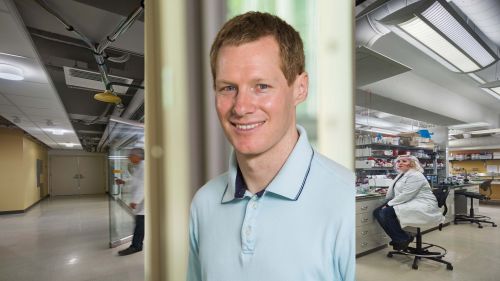
Bacteria have multiple strategies to survive antibiotics: developing genetic resistance to the drugs; delaying their growth; or hiding in protective biofilms. New results from researchers at Princeton and California State University-Northridge (CSUN) have shed light on yet another approach: self-sacrifice.
In a population of E. coli bacteria treated with a particular antimicrobial molecule, the researchers found, some dying cells absorbed large amounts of the antibiotic, allowing their neighbors to survive and continue growing. The researchers created a modified, green fluorescent version of the antibiotic of interest, a peptide molecule known as LL37 that is naturally produced by human skin, airways and other organs that frequently contact bacteria from the outside world. Tracking the glowing molecule’s movements through a population of bacteria, as shown in the figure above, revealed that the antibiotic was accumulating in a subset of dying cells.
Andrej Košmrlj, an assistant professor of mechanical and aerospace engineering at Princeton, collaborated with the CSUN team to develop a mathematical model to more fully explain the phenomenon and aid further investigations.